|
'Does the nutrition advice you give change for someone who wants to lose 50kg or 5kg?'
It's such as fascinating (and good) question to ask because what I think people are really asking is "how bad is my weight compared to someone else?" At the end of the day - weight isn’t the only measure of your health, and should never be the only measure. I've worked and helped thousands of people now and my advice always remains focused on two things:
The advice I provide to someone in a larger body, is exactly the same advice I provide to someone in a smaller body. Because everyone deserves to live a happy and healthy life, no matter their size. (How freeing does that thought feel?) I want you to know that health isn't defined by weight. Small AND large people can have heart attacks or Coeliac Disease. Small AND large people can eat a wide variety of food or under nourish themselves or drink excessive amounts of alcohol. It’s these specific lifestyle behaviours that may affect your health status - regardless of your body size. At the end of the day, I’m here to make you healthier - not thinner. If you’re looking for the tools, knowledge and confidence to go forth and live a beautiful and balanced life around food forever then it’s time to reach out and connect with me. I want my clients to feel AMAZING no matter what their size. My goal is to help you change your relationship with food so that you can do that! I wanted to talk about the middle-age spread or what’s recently been tagged as “meno-belly”. This hands-down is what so many of my clients come to ‘fix’ so I feel it’s time we talk about what’s really going on.
Perimenopause is a natural process that EVERY woman will experience. Some fly through it, but most will experience changes to their bodies, their memory, their mood and their sense of self. What I feel is a missing piece of the conversation around menopause is the fact that YOUR BODY IS GOING TO CHANGE - its’ your body redistributing fat from around your hips (and your reproductive organs) to your tummy, to protect your heart and other vital organs. It’s your body's new priority in life. It's survival. And I also want to acknowledge that during your 45-60's, it’s the time in your life when you have the most amount of responsibility and commitments. You might have children still living at home, a household to run, a job to turn up to and parents that are ageing and needing more care. I refer to this time of life as the 'sandwich years' - you are the meat in the middle, needing to focus on priorities that compete with your ability to self care. Therefore, IT’S NOT YOUR FAULT you feel like you’re running (constantly) and not looking after yourself including food and movement alongside the hormonal ride perimenopause throws at you too. I know living with the body changes that menopause brings can be confronting, it can drag you down and no matter what new diet or 'science' seems tempting to do, you just don't have the energy or time to commit to - you are not alone! This is where my belief in intuitive eating can be liberating. Learning to eat with E.A.S.E can fit swimmingly into the often chaotic nature of how you feel, without feeling restricted or limited to living the way you want to. It is also an alternative way to work WITH your body through this transition without guilt or a sense of feeling lost. Instead, you can feel 100% confident about nourishing it so you feel as stable as possible (whilst your hormones do what they need to do) and feel grounded in your lifestyle habits. NEED SUPPORT DURING PERIMENOPAUSE? I’d love to work with you whether you’re about to hit perimenopause, you’re midway through it or out the other side - it all still matters, because you matter. Book your appointment with me HERE I left uni keen as mustard to change the world one person at time through the stock standard, general nutrition advice of eating more fruit and veg, less saturated fats, less salt and exercise more. I could see my clients struggling with today's fast and convenient foods and I was determined to show them how easy healthy eating was.
It was clear that the "eat less, move more" message wasn't working and I could sense the frustration and held-back emotional turmoil most of my clients were struggling with. I had no idea of how to support them or make inroads to change their eating habits for long term weight loss. Weight reduction was everyone's goal and very few were able to get there (and stay there). As a recently qualified and optimistic dietitian, this was as disheartening for me as it was for many of my clients. Turns out, this scenario is the norm. Because 95% of those who intentionally diet or restrict their food intake to pursue weight loss are not able to maintain these changes for more than 2 years (for very clear, and rational reasons outlined below). I began to study behaviour change, trying to understand people's motivation and what makes them tick but it still wasn't enough. There was a huge elephant in the room and no one was talking about it. That elephant turned out to be weight bias and society's thin ideal. Weight bias refers to the negative ideologies associated with being in a bigger body, which can include (but not limited to) laziness, lack of will power, a lack of moral character, bad hygiene, low level of intelligence and unattractiveness (World Obesity Federation). I hate to say it but we've all been influenced by weight bias in some shape or form in life - be that socially, fashion, school, medical and the biggest one - media. It is ludicrous (and perhaps crazy) to think and expect that thinness = good health = better person = ultimate lifestyle = success but that's what the thin ideal projects. Taking a step back, every person has their own DNA and have different body parts and makeup because of. So why should our body size/shape all look or be the same? Imagine asking someone to change their shoe size, because someone believes that being a Size 8 is ‘best’. That was the game changer for me. Now I was starting to join the dots that these social beliefs and ideologies, whether overt or subtle were having long term ramifications on my clients and their families which often manifested into a complex and scarring relationship with food. I worked hard to dissect my own thoughts, judgements, past advice (help!!!) and HOW I wanted to move forward in helping people in a more impactful way. Because what I came to realise (with more emerging evidence and research) was dieting is harmful - and I had to come to terms with the fact that my old advice was probably part of this bias (and stigma). This was not an easy process, and it took me more than 3 years, a lot of conversations and deep pondering to move towards letting go of what I thought was best advice, and begin to trust that I needed to learn more about the impact of weight bias and really allow people to tell me their stories and what they needed in a dietitian. This led to discovering a Weight Neutral Approach and the Intuitive Eating Framework, which suddenly made a lot of sense to me and for so many of my clients. It was the monkey on my client's back that even they didn't know they were carrying. Intuitive Eating also challenged my ideas and bias towards what really NEEDS to happen (versus what we think SHOULD happen) in the weight and nutrition space, and it has allowed me to reflect on my own food philosophy that (gratefully) was influenced by my mother who instilled a “food is neutral, food is to be enjoyed” approach. This is why I'm passionate to help other women find their sense in the non-sensical world of 'health and wellbeing', to let them know it's not them that's failing - its the diet and all of the false promises that come with it. Intuitive Eating aIt's not easy at first, but it is possible to let go of the pressure to be smaller, and focus on how to nourish with liberty and a sense of real self care. MY // two small letters that signify what’s mine, and it starts with my thoughts about my body
It takes a lot to look inwards and really get to know what lies beneath my skin. I reckon you need courage to recognize and understand the inner workings of how you feel. I'm starting here with my thoughts because when we view ourselves, our beliefs stem from thoughts. Don't get me wrong - its taken me a long time to be able to reflect inwards AND be alright with sitting in a whole lot of uncomfortable, but trust me - its worth it to know how best to look after me. Coming back to my body's story, it begins with the word "MY" which represents the whole self and how I look after it. Mind. Body. Spirit. The truth is no one else can look after me the way I need to, so I've had to figure out what works and what doesn't. For example, going to bed past 10:30pm means I'm not as nice the next day compared to when I'm asleep by 9pm. Not drinking enough water has all sorts of repercussions on my physical health - dry lips, headaches, dry skin, fatigue. Spending too much time on social media does NOT support my confidence. I often am left feeling vacant, unsure of myself and full of useless comparative thoughts I didn't have 30 minutes prior. I know what when I'm not functioning well, I'm not that useful to myself or anyone else. It's the old "put your oxygen mask on first" adage ... I used to think that was being selfish but now, I don’t believe so. It's just a matter of making sure I can be the best version of myself. Mind. Body. Spirit. BODY // my body is perfectly imperfect. It’s mine and no one else has the same one. I've had a pretty stable relationship with my body. I acknowledge that I'm genetically blessed (and privileged) to be thin-bodied, but as a female I still bore the brunt of diet culture, it's messages to look a certain way or be a certain body type. I can remember in high school the commentary from the opposite sex about what was favourable in a girl's body shape, what bra cup was a "good size" (it was a handful btw - but that's stupid because everyone has different hand sizes too!) and who wore too much/too little makeup. My personal attack on my body was my short, muscular legs and arms. I was sporty so playing tennis and being involved in the school aerobics team didn't help. I used to pine over girls with tall, slender legs and skinny arms until I realized in Year 10 I was never going to grow another foot taller. And wearing 9 inch heels a lot of the time hurt too much. And my arms... I just gave up. To this, I credit my love for food. I grew up in a morally neutrally environment which centred food as something we did together, it was shared, it was valued and nothing was ever out of bounds. I ate whatever I wanted, when I wanted without Mum's judgement or intervention - which I believe is why I never forfeited food in order to change my perceived 'thicker' appendages. I can remember the moment when I began to appreciate what my body could do, over how it looked. For context, I was at my heaviest weight in my university days, and the freedom to access hot chips, coffee and cheap drinks on a Thursday night (plus my significant drop in exercise) had caught up with me. I started working with a personal trainer driven from the desire to fit again (rather than a weight loss perspective). Within 6 weeks, not only did I begin to feel better physically but at each session I was more and more gobsmacked by how far I could run, the weights I could lift and the endurance I had. For the record, my body changed to show my level of increased fitness yet the scales did nothing to reflect this. These changes in my function sparked a sense of curiosity of what my body could perform. I started to looked at myself differently from a place of respect, and pride of the things I could do... not just look like. My right eyelid droops more than my left, but I began to care less as I got older. My arms are still not rake thin (and they never will be) but I can carry my toddler in one arm while taking the groceries up a flight of 15 stairs. And being a mum, I have a mummy pouch to go with the territory... but I grew a baby, and that’s just wild in itself. My body will continue to change as I grow old. I now know that's what it is meant to do and continuing to anchor myself to this helps me love and accept what there is to come. Continuing to focus on how I will look after it will always be my number one focus because as I said - I'm a much nicer person when I do so. STORY // Storytelling is a way to document and share something valuable to another, either fictitious or factual. We all have a story to tell, and mine (to me) has become more important to know and reflect on as I continue to work alongside so many more women who are also creating and exploring their own body stories. I didn't know you could have a story, until I came across a small project in the Yarra Valley that invited a select few to gather and share their experiences as women in a world of diet culture. It was a space carved out for those participating to stand back and reflect on their experiences and write their tale. An opportunity to make peace with their body, change the course of the storyline and embrace a sense of hope that they can have a positive relationship with the body they lived in. It is here that I invite you to consider your own Body's Story - what has it done for you, how do you talk about your body? What has it been through? Even better - perhaps it's time to rewrite your story. For more information about the 'My Body's Story' project in the Yarra Valley and it's exhibition, please go to: https://www.yarraranges.vic.gov.au/Experience/Events/My-Bodys-Story I’m here to tell you… You can.
The non-diet approach ditches the diet mentality and restriction and shifts your focus to nourishing your body with what it needs – physically and emotionally. It encourages you to recognise and act on your internal body cues to help you rebuild body trust. Dieting has become the solution when weight is regarded as a problem, and weight is now synonymous with health. But when copious amounts of research state that intentional weight loss cannot be sustained for more than 5 years – its fair to say dieting doesn’t work. We are all innately born with the ability to self-regulate our appetites and to eat intuitively – have you watched how a small child will choose between cake, sandwiches, fruit, popcorn at a birthday party with moral neutrality? Nothing to them is good or bad – it’s just food. And often they will happily leave food when they’re full, relying on their internal cue telling them they’ve had enough. Sadly as adults (and early childhood) society influences us to ignore these inner cues and listen to external rules, that eventually permeate and transform into chronic dieting behaviours. This is known as diet culture and it’s important you begin to identify and reject this mentality as it won’t serve you when you’re trying to move forward and embrace flexible and enjoyable eating habits. The non diet approach avoids weighing and measuring of food and your body. It discourages recording detailed intricate food diaries, obsessive meal planning, rigid timing of meals, specific weight goals or use of ‘diet’ foods as these only separate you further from your internal drivers of how to eat intuitively. There are no good or bad foods in the non diet approach. The biggest fear when stepping into the non diet space is the fear of losing control. The fear of ‘blowing out’ and overeating when there are no rules or restrictions in place. However, when you work with a non diet dietitian, the reality is very different and rarely does this happen in both research and practice. The most important thing that can happen when you embrace a non diet approach is the sense of liberty and confidence around your food choices while your body responds more intuitively to continue that cycle of nourishment and nurturing.
Confused? I don’t blame you! What’s important to remember is that severe restriction of carbs may actually be contributing to your hormone fluctuations from insufficient energy intake and interrupting how your pituitary gland and hypothalamus talk to one another AND all carbs are not the same. Let’s start with WHY carbs are essential for hormone health Your body has a preference for which type of fuel it prefers to burn; and that ladies, are carbohydrates. This is based on the simple physiology that carbohydrates (compared to fat or protein) are broken down and utilised for fuel in the most efficient and effective way, and that’s what powers you to function at your best. All day, most days. When you either restrict or severely limit your carbohydrate intake, your body has no alternative but to find another way to fuel it’s operation. The body switches to burning fat (which you may think is a good thing) however simultaneously, decreases its metabolic rate to conserve energy as best as it can. So, by limiting your carbohydrate foods - you’re actually doing the opposite of what you want your body to do! How does this affect my hormones? When your metabolism has been suppressed, your body thinks it’s living in a compromised state and theoretically is working under stress. Stress promotes higher levels of cortisol and adrenaline (stress hormones) which, increase inflammation in your body. Elevated cortisol levels drives your body to seek sugary foods as a way to instantly provide energy to repair stress damage - and so the vicious cycle continues! The key to avoid getting into this pickle, is eating enough carbohydrates to match your energy needs as well as the right types of carbohydrates. What do you mean the RIGHT type of carbs? Let’s get our terminology right - I like to think about carbs as the umbrella term for all sugary and starchy foods. Both starchy and sugary foods breakdown into single sugar molecules that are absorbed and transported around the body via your bloodstream to your brain and muscles where it is used for energy. When your brain and muscles are adequately fed, there is no need to send out panic signals to your pituitary glands that something is wrong. In order to achieve this steady and stable flow of energy to your brain, it's important to remember to choose carbohydrates foods that are:
Ideally, a slow, steady breakdown of carbohydrates in your body every few hours (eg. at meal times) helps your body to stay regulated without having to combat drastic spikes or falls of regulatory hormones like insulin (required for sugar uptake in your muscles), ghrelin (hunger hormone) or dopamine (happy hormone that can be triggered with excess amounts of sugar). Eating foods that have higher amounts of fibre supports a slower digestion time and a steady release of energy into your bloodstream. This also means feeling fuller for longer which reduces the need to crave more food. Below is list of common foods that contain carbohydrates, divided into categories that. An added bonus of eating high fibre foods is that they generally have high levels of B group vitamins and Vitamin C to help with improving your immunity and reducing inflammation. This means your body able to stay fit to fight off viruses and infections whilst maintaining a happy and harmonious hormone profile.
If you've been feeling lethargic and need guidance on how to incorporate the right carbs for you, drop me a message on my contact page and let's chat! Today I write this as our Victorian Premier announced the end of our sixth (who's counting?) lockdown in Melbourne. Apparently, we broke the world record for the longest time spent living in lockdown throughout the Covid 19 pandemic.
Fair to say, a lot and not a lot has happened since my last post over a year ago. The biggest milestone was becoming a first time mum, and this week we celebrate her first birthday! It's definitely been a tough time not seeing family, friends and enjoying the simple things (I cannot WAIT to walk into Kmart and walk out with what I want...) and the thing I've heard from most of you the fatigue of trying to remain upbeat and looking after yourself whilst trying to survive. The only words I can say to you is: be kind. This sense of standing still is coming to an end and a level of (new) normality will return soon. And so will your sense of self and wellbeing. In amongst learning the ropes of parenthood, The Nutrition Circle has continued to operate predominately by telehealth (online video appointments) which will definitely be here to stay. Many of you have told me that it's convenient to have your appointment during your lunch break and with the flexibility of working from home, this means that you no longer have to jam appointments after hours in your week. I will be returning to face to face appointments in the clinic in the near future, however like everyone else I'm navigating this to ensure your and my safety is held front and centre so please be patient. For now, the plan to is continue to post a few more blogs around nutrition and hormone health with a few non diet tips that I hope will be useful over the next few months. Until then, stay safe. CJ x
SEASIDE SPRAY
olive oil dijon mustard garlic baby capers lemon juice S&P, to season how: mix together, drizzle on cooked vegetables Goes with: asparagus, spinach, silver beet, cauliflower, green salad, broccoli, green beans, squash, zucchini Why do I need to avoid cheese and deli meats? Despite my own mother not excluding these foods whilst pregnant with me, many of us know now that during pregnancy it is recommended to avoid soft cheeses, deli meats (ham, salami, cooked chicken), salad bars, raw egg and soft serve ice cream - but why? The main reason for avoiding these types of food is due to the high risk of food poisoning. Listeria is a bacteria that is found in some foods and can be passed onto the baby and cause premature birth, miscarriage or damage as the baby’s immune system is not strong enough to fight off the infection. The risk remains throughout the whole pregnancy so its important to be strict about this. On top of this, safe food handling is also so, so important. Make sure foods are stored, thawed, cooked (above 60℃ for hot foods, less than 5℃ for cold foods) and reheated appropriately (above 74℃ for more than 2 minutes) and hands and utensils are washed thoroughly to avoid cross contamination. Click here if you want to know more about the in’s and out’s of food handling. Sugar Sweet; 26 week screening for diabetes Gestational diabetes is a condition very much like Type 2 Diabetes, however is caused due to hormone changes during pregnancy. Many women I see say that they are terrified of being diagnosed or even getting the test done, however it is vital to find out especially if there is a history within your family. Gestational diabetes that is not picked up or poorly managed will result in a bigger baby that can lead to a complicated delivery for mum. All women should be screened at 26 weeks with a glucose tolerance test to ensure they don’t have high blood sugar levels and if a diagnosis is made, there is lots of support available from your GP, midwife, dietitian and Endocrinologist to keep both mother and baby fit and healthy. Do I avoid all fish? Fish is a really lean source of protein and aiming to eat two servings of fish per week can be healthy for mum and baby. Coldwater fish in particular contains lots of omega-3 fatty acids, which help with your baby's brain development and vision. What you need to avoid is fish high in mercury, such as swordfish, shark, deep sea perch and king mackerel as high levels of mercury can cross the placenta and inhibit the development of baby’s nervous system. Salmon, shrimp, and canned tuna are better choices but not everyday. Make sure you also skip any raw fish too, including sushi or sashimi as raw fish is more likely than cooked fish to contain parasites and bacteria that can be harmful to baby’s growth and wellbeing. 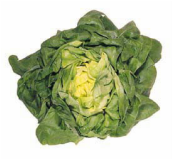 Eating for Two Are you helping yourself to seconds of potato salad or giving into that ice cream craving EVERY night? Not so fast. Yes, you are eating for two -- but that doesn't mean two adult-sized servings are necessary. The average woman with a normal weight pre-pregnancy needs only about 720 kilojoules (or 300 calories) extra per day to promote her baby's growth, according to the Australian Guide to Healthy Eating (AGHE). That's roughly the equivalent to a glass of skim milk and a piece of fruit! The table below provides a guideline to how much weight women should gain during their whole pregnancy, based on pre-pregnancy weight status. If your pre-pregnancy BMI* was... | You should gain….. Less than BMI 18.5 kg/m2 | 12.5-18 kg BMI 18.5-24.9 kg/m2 | 11.5-16 kg BMI 25-29.9 kg/m2 | 7-11.5 kg BMI more than 30 kg/m2 | 7-9 kg Reference: Queensland Health “Healthy Eating during Pregnancy” * BMI is calculated by dividing your weight by your height squared (in metres) Boosting iron and iodine During pregnancy, both iron and iodine requirements increase to help the body ensure it has enough for both mum and bub. Iron is necessary for making red cells in both mum and baby and helps to carry oxygen in the blood. Many women can become anaemic in the first trimester so its essential iron rich sources such as lean red meat, leafy green vegetables, legumes and fortified cereals are eaten regularly. Adding a source of vitamin C whilst consuming high iron foods can boost the absorption but avoid pairing caffeine and high calcium sources with iron foods as this blocks iron absorption. Iodine requirements also increase during pregnancy as this is a vital nutrient for baby’s growth and brain development. Iodine is found in fruit and vegetables, seafood, eggs and iodised salt as well as bread (as it is now mandatory to use iodised salt in bread production). If you think you may not be getting enough, speak to your GP or dietitian to check. For more information, check out the AGHE for pregnancy. ** With all medical and health issues, it's imperative to consult your doctor or dietitian for tailored advice regarding your personal situation before commencing any changes. This article is written to inform and like anything, a balanced diet and regular activity is important to maintain health and well being. |
AuthorThe way to Carla's heart is all things food. Follow her thoughts and opinions on the latest food news and myths. Archives
November 2023
Categories |

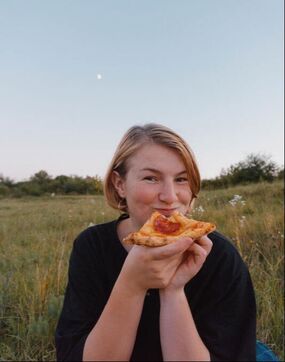
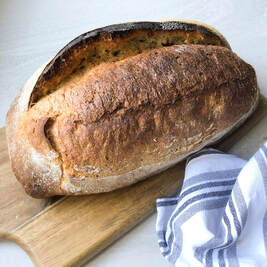
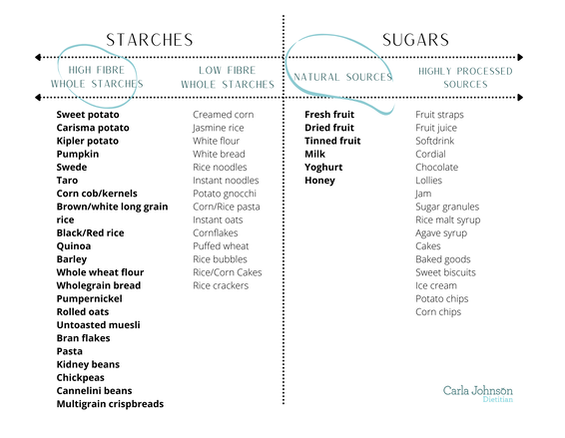
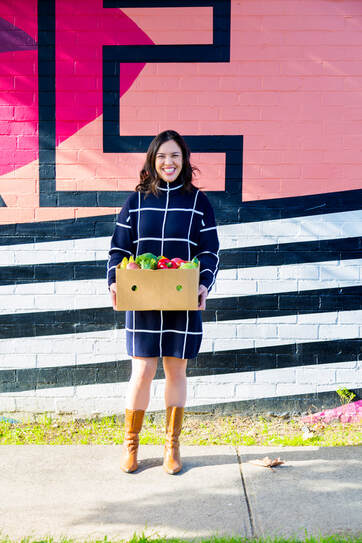
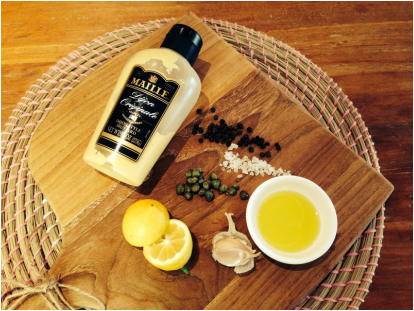

 RSS Feed
RSS Feed
